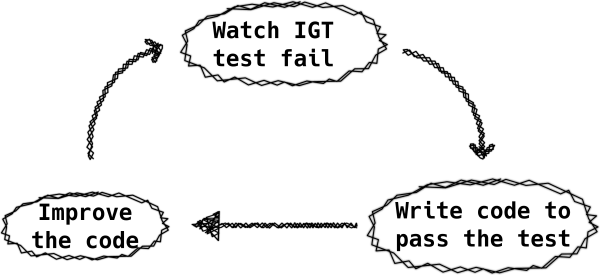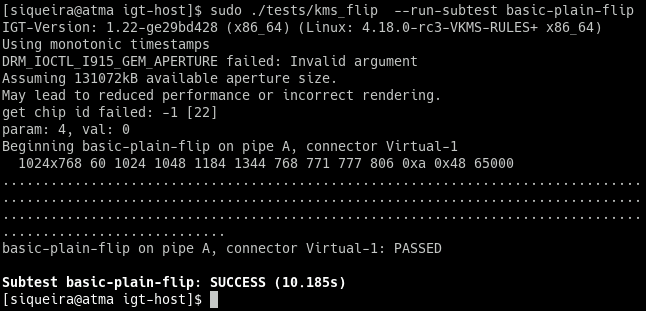Since the beginning of May 2018, I have been diving into the DRM subsystem. In the beginning, nothing made sense to me, and I had to fight hard to understand how things work. Fortunately, I was not alone, and I had great support from Gustavo Padovan, Daniel Vetter, Haneen Mohammed, and the entire community. Recently, I finally delivered a new feature for VKMS: the infrastructure for Vblank and page flip events.
At this moment, VKMS have regular Vblank events simulated through hrtimers (see drm-misc-next), which is a feature required by VKMS to mimic real hardware [6]. The development approach was entirely driven by the tests provided by IGT, more specifically the kms_flip. I modified IGT to read a module name via command line and force the use of it, instead of using only the modules defined in the code (patch submitted to IGT, see [1]). With this modification in the IGT, my development process to add a Vblank infrastructure to VKMS had three main steps as Figure 1 describes.

Firstly, I focused only on the subtest “basic-plain-flip” from IGT and after each execution of the test I checked the failure messages. Secondly, I tried to write the required code to make the test pass; it is essential to highlight that this phase sometimes took me days to understand the problem and implement the fix. Finally, after I overcome the failure, I just put an additional effort to improve the implementation. As can be seen in the patchset send to add the Vblank support [2], the first set of patches was not directly related to the Vblank itself, but it was a necessary infrastructure required for kms_flip to work.

After an extended period of work to make VKMS pass in the basic-plain-flip, I finally achieved it thanks to all the support that I received from the DRM community. Next, I started to work on the subtest “wf_vblank-ts-check”, and here I spent a lot of time debugging problems. My issue here was due to the stochastic test behavior, sometimes it passed and other, it fails, and I supposed the problem was related to the accumulation of errors during the page flip step. As a result, I put a considerable effort to make the timer in the page flip precise, I end up with a patch that calculates the exact moment for the next period (see [5]). Nevertheless, after I submitted the patch, Chris Wilson highlighted that I was reinventing the wheel since hrtimer already did the required calculations [4]; he was 100% right, after his comment I looked line by line of hrtimer_forward, and I concluded that I implemented the same algorithm. I lost some days recreating something that is not useful in the end; however, it was really valuable for me since I learned how hrtimer works and also expanded my comprehension about Vblank. Finally, Daniel Vetter precisely pointed out a series of problems in the patch (see [3]) that not only improved the tests, but also made most of the tests in the kms_flip pass.
In conclusion, adding the infrastructure for Vblank and page flip events in vkms was an exciting feature for VKMS, but also it was an important task to teach me how things work in the DRM. I am still focused on this part of the VKMS, but now, I am starting to think how can I add virtual hardware which does not support Vblank interrupt. Finally, I want to write a detailed blog post on how I implemented the Vblank support in the VKMS and another post about timers (users and kernel space); I believe this sort of post could be helpful for someone that is just starting in the DRM subsystem.
Thanks for all the DRM community that is always kind and provide great help for a newcomer like me :)


